Recent Articles
Popular Makes
Body Types
10 Things You Should Know About the 2011 Hyundai Sonata
Hyundai’s midsize sedan aims for the best in the class.
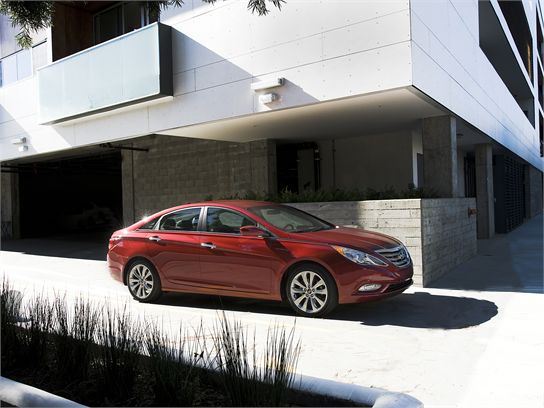
No model embodies the Hyundai brand better than the Sonata. This South Korean manufacturer’s midsize sedan has gained a strong following in the United States as an automotive bargain, a car that offers most of the room, comfort and capability of the class leaders for a more reasonable price. However, I’ve always thought the styling to be uninspired and the ride and handling balance leaning too far toward slushy comfort. For 2011, Hyundai is addressing those issues with an all-new Sonata. Featuring even more room, improved handling, fresh styling, and a fuel-efficient powertrain the Sonata is promising, while retaining its price advantage. With changes like that, it’s no wonder that Hyundai is the fastest growing brand in the U.S. Photos courtesy of Hyundai.
Page 2
Hyundai has labeled its new design language “Fluidic Sculpture.” While that may sound fancy, it translates to an aerodynamic shape with flowing lines and sharp sculptural elements. Among those elements are the unique chromed character lines that extend from the headlights to the rear side windows. Mirroring those lines are a set of creases that start behind the front wheels, incorporate the door handles, and extend to the taillights. Also adding to the visual interest is the roof, which extends back in a coupe-like profile, and the heavily chromed front grille. On the whole, the Sonata looks far better than it ever has and is now arguably the best looking car in the class.
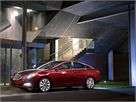
Page 3
The 2011 Hyundai Sonata is offered in three well-equipped models. The base GLS model starts at $19,195 and comes standard with remote keyless entry, trip computer, AM/FM/CD stereo, XM satellite radio, and Bluetooth connectivity. The sport-oriented SE model costs $22,595. It adds a sport suspension with stiffer shocks and springs, a thicker rear stabilizer bar, steering tuned for more effort, and low-profile 18-inch tires. Inside, it gets sport seats with leather bolstering and cloth inserts, along with keyless access and starting. The luxurious Limited starts at $25,295 and comes with leather upholstery, heated front and rear seats, dual-zone automatic climate control, 360-watt Dimension audio system, HD radio, sunroof, and 17-inch alloy wheels.
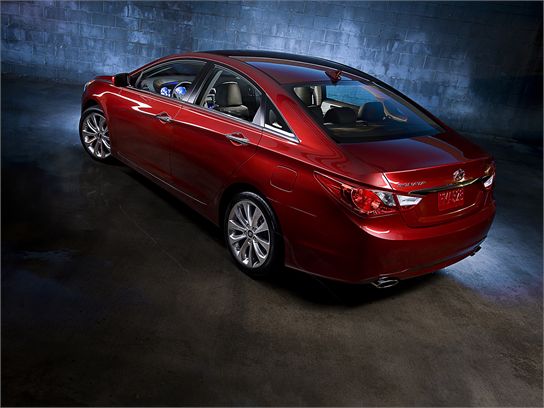
Page 4
Perhaps as an indication of things to come, the 2011 Hyundai Sonata offers only four-cylinder power. In a concession to upcoming fuel economy standards, the 249-horsepower 3.3-liter V6 is gone. The 2.4-liter four-cylinder engine returns, but it now has direct injection, which ups power from 175 to 198 horses. With its dual exhaust, the SE model makes 200 horsepower. Torque comes in at 184 pound-feet in base trim and 186 pound-feet in the SE. A six-speed manual transmission returns and Hyundai has replaced the five-speed automatic with an all-new six-speed automatic with manual shift capability. The SE model adds steering wheel shift paddles for the automatic transmission.
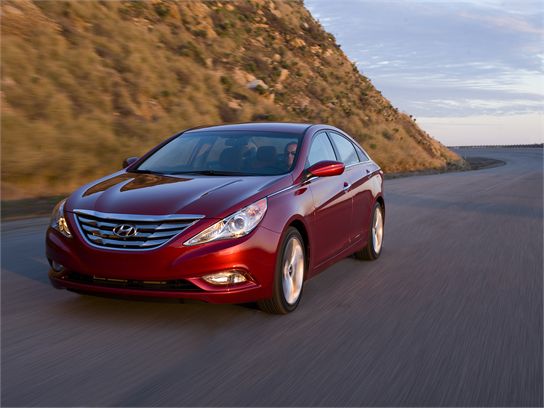
Page 5
The 2.4-liter engine is smooth and quiet for a four-cylinder, and more importantly, it doesn’t lack for power. It provides willing punch from a stop and sufficient midrange response. Hyundai wouldn’t quote a 0-60 mph figure, but we expect a time of about eight seconds, which is pretty good for a small engine. Most cars sold will come with the new six-speed automatic transmission, which shifts smoothly and predictably. It is programmed for fuel economy though. Shifting up as soon as possible, some passing situations will require a deep push of the throttle. Still, the 2.4-liter four-cylinder isn’t as smooth or as powerful as the V6s from Nissan, Honda, Toyota, or Chevrolet. Those wanting more power will be happy to learn that…
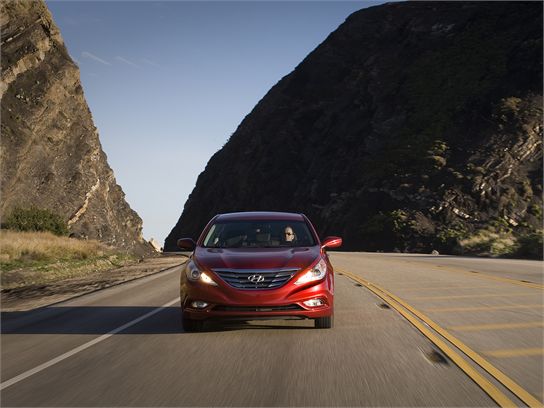
Page 6
If 200 horsepower isn’t enough, maybe 250 will be. That’s the expected output of the turbocharged 2.4-liter four-cylinder Hyundai is planning. The new turbocharged engine should compete with rival V6s for power delivery while achieving better fuel economy. Also due in the not-to-distant future is a hybrid model, probably marketed as “Blue Drive”. Details haven’t been released, but Hyundai’s hybrid system will likely feature a lithium-polymer battery and increase fuel economy by 25 percent without sacrificing power. Hyundai will reveal more about both powertrains at the New York Auto Show in late March.
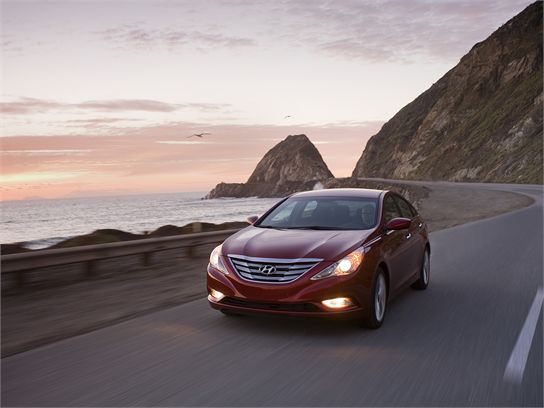
Page 7
In developing the 2011 Sonata, Hyundai made several changes that all add up to impressive fuel economy. Aside from the powertrain changes, the engineers made sure the car was light and aerodynamic. A lighter, stiffer body structure helped cut 54 pounds out of the curb weight, while the new exterior design and a smooth underbody cut the coefficient of drag from 0.32 to 0.28. Low-rolling resistance tires, a low-friction driveline, and a smart alternator that charges only during coasting also add incrementally to fuel economy. The result is a car with class-leading EPA fuel economy ratings of EPA 24 mpg city/35 mpg highway with the manual transmission and 22/35 with the automatic.
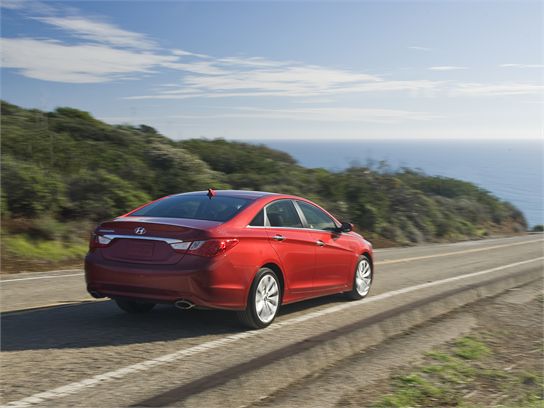
Page 8
In the past, the Sonata has taken a page out of the Toyota Camry book by placing a comfortable ride above agile handling. However, those cars suffered from some unwanted body motions, such as wallowing on the highway and a bit too much lean in turns. Those problems are solved for 2011, as the new platform is considerably lighter and stiffer than the last one and the suspension has been tuned to reduce body lean while still delivering a smooth ride. At the same time, the steering feel has been turned up thanks to new electric power steering. The SE model is even better composed and sporty with sharper reactions and heavier steering. The Sonata still isn’t quite as nimble as the impressive Accord or Nissan Altima, but it’s much more satisfying to drive.
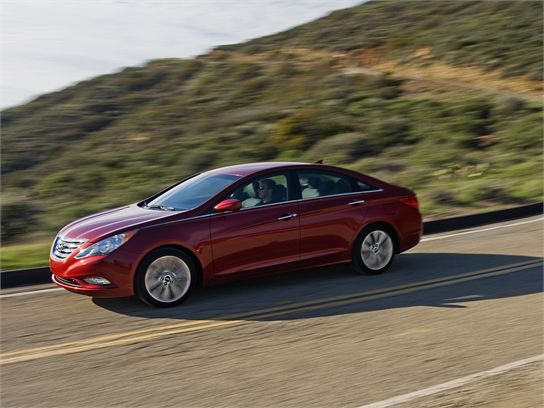
Page 9
One of Hyundai’s greatest advantages is the ability to deliver quality interiors at a bargain price. The 2011 Sonata fits that mold. The environment is attractive and rich, with quality soft-touch materials, easy-to-read gauges, and a simple control layout. Small items storage space is abundant, as is room for passengers. The front seats have enough rearward travel to make even tall drivers happy, while the rear seat offers plenty of room for three. In fact, with 120.2 total cubic feet of interior volume (including the trunk), the Sonata qualifies as a large car under the EPA’s classification system.
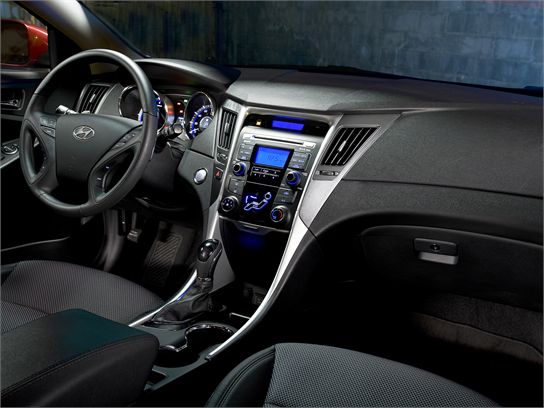
Page 10
Despite its recent success, Hyundai has not strayed from its reputation for offering value for the dollar. According to Hyundai, when standard features are factored in, the 2011 Sonata GLS with the automatic transmission has a $2384 advantage over a Toyota Camry LE and a $1650 advantage over a Honda Accord LX. Of course, that doesn’t take into account subjective factors such as ride quality, handling prowess, fun-to-drive character, interior quality, and refinement. However, the new Sonata is competitive with the class leaders in all those areas. The Accord and Camry are the two best-selling midsize cars. With its redesign, the Sonata stands to take a bite out of their sales lead.
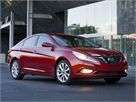
Page 11
Though they offered value, previous versions of the Hyundai Sonata have fallen down in terms of looks and chassis engineering. Those problems are solved for the 2011 edition, and the value still remains. The 2011 Hyundai Sonata offers aggressive good looks, a fuel-efficient engine, much-improved handling, and a spacious interior. The chassis changes in particular help it catch up to the best cars in the class. The Sonata is now fully realized, and it should be on your shopping list if you’re considering a midsize sedan.
